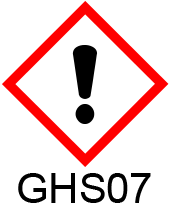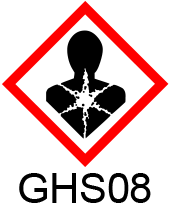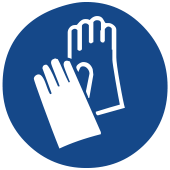Safety Data Sheet
acc. to OSHA HCS
Rev. n. 2
Date of issue: 04/06/2025
Reviewed on 04/06/2025
* 1. Identification
Product identifier
Trade name: PORCELAIN SLABS manufactured by Atlas Plan
Other means of identification
Application of the substance / the mixture
Porcelain slabs for floors and walls
Porcelain slabs are made from a blend of high-quality clays, silica sand, feldspar and other naturally occurring minerals, combined with water and fired at high temperatures in a kiln. The resulting slabs are odorless, stable and non- flammable.
Additionally, porcelain slabs are an environmentally friendly option compared to other flooring and wall covering materials, offering a more sustainable choice for construction projects.
This product is specifically designed for both construction and decorative applications, making it ideal for a variety of indoor and outdoor settings. Typical uses include floors, walls, kitchen and bathroom countertops, and similar installations.Uses advised against
Do not mechanically process the material using dry methods. Always use wet methods (apply water) during all fabrication and processing. Avoid generating airborne dust, especially without appropriate respiratory protective equipment, adequate air filtration and adequate air ventilation systems which depend on the specific workplace conditions. Improper mechanical processing of this product may result in exposure to harmful silica dust (SiO2) inhalation, particularly if the recommended use of water, air filtration, and ventilation systems is not followed.
Details of the supplier of the safety data sheet
Manufacturer/Supplier:
Ceramiche Atlas Concorde
via Canaletto, n.141, 41042 - Fiorano Modenese (MO) - Italy
Reference number: +39 0536 867811Information department:
Ceramiche Atlas Concorde
E-mail: sds@atlasconcorde.it
Emergency telephone number:
Ceramiche Atlas Concorde: +39 0536 867811
* 2. Hazard(s) identification
Classification of the substance or mixture
There is no proof or indication that the whole, finished product [definable as an “article” according to both 29 CFR 1910.1200 (Hazard Communication Standard)] has any risks according to Globally Harmonized System (GHS).
In the case of the breakage of the article or its processing, involving cutting, shaping, engraving or any other process which could lead to the release of dust traceable to the matrix of the article, it may generate crystalline silica powder (SiO2) in the form of quartz. Generation and inhalation of this dust shall be avoided.
The hazard assessment refers to this specific case. No acute or chronic effects are known from exposure to intact slabs.
Please see Section 3 for the crystalline silica content of the whole finished product.Eye irritation 2A H319 Causes serious eye irritation. Carcinogenicity 1A H350 May cause cancer. Specific target organ toxicity (single exposure) 3 H335 May cause respiratory irritation. Specific target organ toxicity (repeated exposure) 1 H372 Causes damage to the lung through prolonged or repeated exposure. Route of exposure: Inhalation. Additional information:
The breathable fraction of crystalline silica (SiO2) may lead to lung damage or illnesses, such as silicosis.
Label elements
GHS label elements:
Not applicable to intact slabs. WARNING: This product can expose you to chemicals including crystalline silica which is known to the State of Califomia to cause cancer. For more information go to www.P65warnings.ca.gov.
WARNING: This product can expose you to chemicals including crystalline silica which is known to the State of Califomia to cause cancer. For more information go to www.P65warnings.ca.gov. CAUTION: SILICA DUST HARMFUL IF INHALED. Exposure to silica dust from cutting, grinding, or polishing can cause acute lung injury, silicosis, or cancer.
Wear a respirator when cutting, grinding, or polishing. Use wet cutting methods and do not dry cut. Ensure adequate ventilation to minimize dust accumulation and exposure. Children should not be present during cutting, grinding, or polishing.Hazard pictograms


Signal word Danger
Hazard-determining components of labeling:
Quartz (SiO2)
FeldsparHazard statements
Causes serious eye irritation.
May cause cancer.
May cause respiratory irritation.
Causes damage to the lung through prolonged or repeated exposure. Route of exposure: Inhalation.Precautionary statements
P201 Obtain special instructions before use.
P260 Do not breathe dust.
P280 Wear protective gloves/protective clothing/eye protection/face protection.
Other hazards
If the product is processed in such a way that significant particulates and/or dusts may be generated, exposure may aggravate pre-existing eye, skin, or respiratory conditions. Machines and tools with water supply systems or the “wet method” must be used. Do not mechanically process the material using dry methods. Avoid generating airborne dust, especially without appropriate respiratory protective equipment, adequate air filtration and adequate air ventilation systems. Improper mechanical processing of this product may result in exposure to harmful silica dust (SiO2) inhalation, particularly if the recommended use of water, air filtration, and ventilation systems is not followed. When exposed to high temperatures, free quartz can change crystal structure to form tridymite (above 870°C.) or cristobalite (above 1470°C.) which have greater health hazards than quartz due to their more fibrogenic characteristics.
Manufacturers who crush, grind or cut ceramic bodies fired to high temperatures should recognize the possible presence of tridymite and/or cristobalite.
Slabs and boxes, if not grasped or handled correctly, can accidentally fall causing crushing of both hands and feet.Results of PBT and vPvB assessment
PBT: Not applicable.
vPvB: Not applicable.
* 3. Composition/information on ingredients
Chemical characterization: Mixtures
Description:
Composition (%): The material is the result of high temperature sintering (between 1150 - 1250 °C) of various heavily compacted minerals in different proportions depending on the product.
Before sintering, the substances in the mixture are:Components:
CAS: 68476-25-5 Feldspar 30-50% CAS: 1332-58-7 Kaolin 25-50% CAS: 14808-60-7 Quartz (SiO2) 10-30% CAS: 14807-96-6 Talc (Mg3H2(SiO3)4) 0-6% Additional information:
After firing, the finished product includes mainly silica/quartz (5-30%), glass (50-70%), mullite (0-15%), feldspar (0-15%), small amounts of inorganic additives, as well as inorganic pigments.
* 4. First-aid measures
Description of first aid measures
General information:
First Aid Measures are applicable only to the dust resulting from crushing, grinding or sawing of slabs. Intact slabs pose no eye or inhalation hazards.After inhalation:
Supply fresh air. If required, provide artificial respiration. Keep patient warm. Consult doctor if symptoms persist. In case of unconsciousness place patient stably in side position for transportation.After skin contact:
Rinse opened eye for several minutes under running water. If symptoms persist, consult a doctor.After eye contact:
Rinse opened eye for several minutes under running water. If symptoms persist, consult a doctor.After swallowing:
Rinse out mouth with water. Do not induce vomiting.
Most important symptoms and effects, both acute and delayed
No acute effects are known from exposure to intact slabs. Working with broken or cut slab produces a potential for cuts to the hands and exposed body parts. Acute effects such as eye irritation may occur if associated with high dust operations such as dry cutting or drilling the slab or during the removal of slab surfaces. Symptoms of acute silicosis, a form of silicosis (a nodular pulmonary fibrosis) associated with exposure to respirable crystalline silica, may develop following acute exposure to extremely dusty environments caused by generation of slab dust. Signs such as labored breathing and early fatigue may indicate silicosis; however, these same symptoms can arise from many other causes.
No chronic effects are known from exposure to intact slabs. Long-term, continual exposure to respirable crystalline silica at or above allowable occupational exposure limits may lead to the development of silicosis, a nodular pulmonary fibrosis (NPF). NPFs are also associated with pulmonary tuberculosis, bronchitis, emphysema, and other airway diseases. This type of chronic exposure to silica dust may also result in the development of autoimmune disorders, chronic renal disease, and other adverse health effects. Recent epidemiologic studies demonstrate that workers exposed to elevated silica concentrations have a significant risk of developing chronic silicosis. Signs such as labored breathing and early fatigue may indicate silicosis.
Indication of any immediate medical attention and special treatment needed
No further relevant information available.
* 5. Fire-fighting measures
Extinguishing media
Suitable extinguishing agents:
Use fire fighting measures that suit the environment.
CO2, extinguishing powder or water spray. Fight larger fires with water spray or alcohol resistant foam.
Special hazards arising from the substance or mixture
No further relevant information available.
Advice for firefighters
Protective equipment:
No special measures required.Additional information
Dispose of fire debris and contaminated fire fighting water in accordance with official regulations.
* 6. Accidental release measures
Personal precautions, protective equipment and emergency procedures
Avoid creating dust wherever possible.
Environmental precautions:
Clean up and collect spilled material. Avoid breathing particulates.
If particulates are involved, evacuate the area of unprotected personnel during cleanup and wear an appropriate respirator.Methods and material for containment and cleaning up:
Use wet sweeping compound or water to minimize particulates. Pick up mechanically.
Protective Action Criteria for Chemicals
PAC-1: CAS: 14808-60-7 Quartz (SiO2) 0.075 mg/m³ PAC-2: CAS: 14808-60-7 Quartz (SiO2) 8.3 mg/m³ PAC-3: CAS: 14808-60-7 Quartz (SiO2) 50 mg/m³
Reference to other sections
See Section 7 for information on safe handling.
See Section 8 for information on personal protection equipment.
See Section 13 for disposal information.
* 7. Handling and storage
Precautions for safe handling
When cutting, grinding or removing, use wet cutting methods to reduce generation of dust.
Wear full-face suitable respiratory protective equipment. Please refer to OSHA 29 CFR 1910.1053 and 29 CFR 1926.1153 to determine whether respirators are necessary based on silica exposure levels. Then, consult 29 CFR 1910.134 for specific respiratory protection requirements, including respirator selection, fit testing, and maintenance.
Additionally, ensure the use of appropriate respiratory protection even when using water as a dust reduction measure during product processing.
Slabs and boxes, if not grasped or handled correctly, can accidentally fall causing crushing of both hands and feet.Information about protection against explosions and fires:
The product is not flammable.
Conditions for safe storage, including any incompatibilities
Storage:
Requirements to be met by storerooms and receptacles:
Store in clean and dry conditionsInformation about storage in one common storage facility:
Do not store together with acids.Further information about storage conditions:
None.
Specific end use(s)
No further relevant information available.
* 8. Exposure controls/personal protection
Control parameters
Components with limit values that require monitoring at the workplace:
The following constituents are the only constituents of the product which have a PEL, TLV or other recommended exposure limit.
For the most up-to-date specific limits or limits for countries not listed here, please consult a qualified health and safety professional or the relevant regulatory authority in the respective country. The occupational exposure levels provided are for informational purposes only, are not legally binding, and may not be fully accurate.CAS: 1332-58-7 Kaolin PEL Long-term value: 15* 5** mg/m³
*total dust **respirable fractionREL Long-term value: 10* 5** mg/m³
*total dust **respirable fractionTLV Long-term value: 2* mg/m³
E; respirable particulate matter, A4CAS: 14808-60-7 Quartz (SiO2) PEL Long-term value: 0.05* mg/m³
*resp. dust; 30mg/m³/%SiO2+2REL Long-term value: 0.05* mg/m³
*respirable dust; See Pocket Guide App. ATLV Long-term value: 0.025* mg/m³
*respirable particulate matter, A2CAS: 14807-96-6 Talc (Mg3H2(SiO3)4) PEL Long-term value: 20 mppcf ppm
(containing <1% Quartz)REL Long-term value: 2* mg/m³
*respirable dust; and <1% QuartzTLV Long-term value: 2* mg/m³
*no asbestos fibers,resp. particulate matter,E,A4Regulatory information
PEL: Guide to Occupational Exposure Values (OSHA PELs)
REL: Guide to Occupational Exposure Values (NIOSH RELs)
TLV: Guide to Occupational Exposure Values (TLV-ACGIH)Additional information:
The lists that were valid during the creation were used as basis.
Exposure controls
Appropriate engineering controls
Always provide effective general and local exhaust ventilation to draw dust away from workers to prevent routine inhalation.Personal protective equipment:
General protective and hygienic measures:
The usual precautionary measures for handling chemicals should be followed.
Avoid creating airborne dust while working
Do not eat or drink while working.
Wash hands before breaks and at the end of work.
Keep away from tobacco products.
Immediately remove all soiled and contaminated clothing.
Always provide effective general and local exhaust ventilation to draw dust away from workers to prevent routine inhalation.
Ventilation must be adequate to maintain the ambient workplace atmosphere below the permissible exposure limits.
Avoid contact with the eyes and skin.Breathing equipment:
 Wear suitable respiratory protective equipment. Please refer to OSHA 29 CFR 1910.1053 and 29 CFR 1926.1153 to determine whether respirators are necessary based on silica exposure levels.
Wear suitable respiratory protective equipment. Please refer to OSHA 29 CFR 1910.1053 and 29 CFR 1926.1153 to determine whether respirators are necessary based on silica exposure levels.
Then, consult 29 CFR 1910.134 for specific respiratory protection requirements, including respirator selection, fit testing, and maintenance.
Additionally, ensure the use of appropriate respiratory protection even when using water as a dust reduction measure during product processing.Protection of hands:
 Cotton or leather work gloves should be worn when cutting this product to minimize skin exposure to dust and/or cuts.
Cotton or leather work gloves should be worn when cutting this product to minimize skin exposure to dust and/or cuts. Eye protection:
 Use dust-proof goggles or safety glasses with side shields. Contact lenses may absorb irritants. Do not wear contact lenses in work areas.
Use dust-proof goggles or safety glasses with side shields. Contact lenses may absorb irritants. Do not wear contact lenses in work areas. Body protection:
When processing the product wear work clothing made of a fabric that does not retain dust. Avoid cleaning with compressed air; use vacuum cleaning methods instead.
* 9. Physical and chemical properties
Information on basic physical and chemical properties
General information
Physical state: Solid
Color: Different according to coloring
Odor: Odorless
Odor threshold: Not determined.
Melting point/Melting range: Undetermined.
Boiling point/Boiling range: ≥ 2200 °C (≥ 3,992 °F) (≥3992 °F)
Flammability: Non-flammable mixture
Explosion limits:
Lower: Not applicable.
Upper: Not applicable.
Flash point: Not applicable.
Decomposition temperature: Not applicable.
pH-value: Not applicable.
Mixture is non-soluble (in water).Viscosity:
Kinematic: Not applicable.
Dynamic: Not applicable.
Solubility in / Miscibility with:
Water: Insoluble.
Partition coefficient (n-octanol/water): Not applicable.
Vapor pressure: Not applicable.
Density at 20 °C (68 °F): 2.4-2.7 g/cm³ (20.028-22.532 lbs/gal) (20.028-22.532 lbs/ gal)
Vapor density: Not applicable.
Particle characteristics: Not determined.
Other information
Appearance:
Form: Solid
Important information on protection of health and environment, and on safety.
Ignition temperature: Product is not selfigniting.
Danger of explosion: Product does not present an explosion hazard.
Solvent content:
VOC content: 0.00 %
Change in condition
Evaporation rate Not applicable.
* 10. Stability and reactivity
Reactivity
No further relevant information available.
Chemical stability
Thermal decomposition / conditions to be avoided:
No decomposition if used and stored according to specifications.
Possibility of hazardous reactions
No dangerous reactions known.
Conditions to avoid
Protect from heat and direct sunlight.
Incompatible materials:
Keep away from: strong acids, strong bases and oxidation agents.
Hazardous decomposition products:
No dangerous decomposition products known.
* 11. Toxicological information
Information on toxicological effects
Potential Health Effects: none for intact slab.
Acute toxicity:
LD/LC50 values that are relevant for classification:
CAS: 14808-60-7 Quartz (SiO2) Oral LD50 >2,000 mg/kg (rat) Dermal LD50 >2,000 mg/kg (rabbit) Inhalative LC50 / 4h No specific data are available on acute toxicity that would permit a 100% categorical decision on the classification for acute toxicity by inhalation for any kind of crystalline silica. As a result, animal welfare concerns make further experiments unjustifiable. Primary irritant effect:
Symptoms/Injuries After Inhalation: for particulates or dust from processing: irritation of the respiratory tract and the other mucous membranes. Cough, dyspnea (breathing difficulty), wheezing; decreased pulmonary function, progressive respiratory symptoms (silicosis). The lungs become very inflamed and may fill with fluid, causing severe shortness of breath and low blood oxygen levels.on the skin:
Symptoms/Injuries After Skin Contact: for particulates or dust from processing: prolonged exposure may cause skin irritation. Direct contact may cause irritation by mechanical abrasion.on the eye:
Symptoms/Injuries After Eye Contact: for particulates or dust from processing: may cause slight irritation to eyes. Contact may cause irritation due to mechanical abrasion.
Carcinogenicity:
Respirable Crystalline Silica (RCS)
Respirable crystalline silica is classified by the International Agency for Research on Cancer (IARC) as a Group I Carcinogen (carcinogenic to humans). The National Toxicology Program lists respirable crystalline silica as “Known to be a Human Carcinogen”. USDOL/OSHA and NIOSH regulated crystalline silica as carcinogenic.Additional toxicological information:
Exposure to respirable crystalline quartz may cause delayed (chronic) lung injury - silicosis. Acute or rapidly developing silicosis may occur in a short period of time in heavy exposure. Silicosis is a form of disabling pulmonary fibrosis which can be progressive and may lead to death.
Some studies show that exposure to respirable crystalline silica (without silicosis) or that the disease silicosis may be associated with the increased incidence of several autoimmune disorders such as scleroderma (thickening of the skin), systemic lupus erythematosus, rheumatoid arthritis and diseases affecting the kidneys. Silicosis increases the risk of tuberculosis. Some studies show an increased incidence of chronic kidney disease and end-stage renal disease in workers exposed to respirable crystalline silicaCarcinogenic categories
IARC (International Agency for Research on Cancer) CAS: 14808-60-7 Quartz (SiO2) 1 CAS: 14807-96-6 Talc (Mg3H2(SiO3)4) 2A NTP (National Toxicology Program) CAS: 14808-60-7 Quartz (SiO2) K OSHA-Ca (Occupational Safety & Health Administration) None of the ingredients is listed.
* 12. Ecological information
Toxicity
Aquatic toxicity:
No further relevant information available.
Persistence and degradability
No further relevant information available.
Bioaccumulative potential
No further relevant information available.
Mobility in soil
No further relevant information available.
Results of PBT and vPvB assessment
PBT: Not applicable.
vPvB: Not applicable.
Other adverse effects
Additional ecological information:
General notes:
Water hazard class 1 (Self-assessment): slightly hazardous for water
Do not allow undiluted product or large quantities of it to reach ground water, water course or sewage system.
* 13. Disposal considerations
Waste treatment methods
Recommendation:
Disposal must be made according to official regulations.
Uncleaned packagings
Recommendation:
Disposal must be made according to official regulations.
* 14. Transport information
UN-Number
DOT, ADR/RID/ADN, IMDG, IATA Void
UN proper shipping name
DOT, ADR/RID/ADN, IMDG, IATA Void
Transport hazard class(es)
DOT, ADR/RID/ADN, ADN, IMDG, IATA Class Void
Packing group
DOT, ADR/RID/ADN, IMDG, IATA Void
Environmental hazards
Not applicable.
Transport in bulk according to Annex II of MARPOL73/78 and the IBC Code
Not applicable.
Transport/Additional information
Not dangerous according to the above specifications.
Special precautions for user
Not applicable.
UN "Model Regulation"
Void
* 15. Regulatory information
Safety, health and environmental regulations/legislation specific for the substance or mixture
This product may be subject to the following U.S. regulations:
OSHA 29 CFR 1910.1053 – Respirable Crystalline Silica Standard for General Industry. Establishes exposure limits and control measures for respirable crystalline silica in industrial settings.
OSHA 29 CFR 1926.1153 – Respirable Crystalline Silica Standard for Construction. Specifies exposure limits and protective measures for construction-related activities involving crystalline silica.Sara
Section 355 (extremely hazardous substances): None of the ingredients is listed. Section 313 (Specific toxic chemical listings): None of the ingredients is listed. TSCA (Toxic Substances Control Act):
All ingredients are listed or exempt.CAS: 68476-25-5 Feldspar ACTIVE CAS: 1332-58-7 Kaolin ACTIVE CAS: 14808-60-7 Quartz (SiO2) ACTIVE CAS: 14807-96-6 Talc (Mg3H2(SiO3)4) ACTIVE Hazardous Air Pollutants
None of the ingredients is listed.Proposition 65
Chemicals known to cause cancer: CAS: 14808-60-7 Quartz (SiO2) Chemicals known to cause reproductive toxicity for females: None of the ingredients is listed. Chemicals known to cause reproductive toxicity for males: None of the ingredients is listed. Chemicals known to cause developmental toxicity: None of the ingredients is listed. Carcinogenic categories
EPA (Environmental Protection Agency) None of the ingredients is listed. TLV (Threshold Limit Value) CAS: 1332-58-7 Kaolin A4 CAS: 14808-60-7 Quartz (SiO2) A2 CAS: 14807-96-6 Talc (Mg3H2(SiO3)4) A4 NIOSH-Ca (National Institute for Occupational Safety and Health) CAS: 14808-60-7 Quartz (SiO2) Precautionary statements
P201 Obtain special instructions before use.
P260 Do not breathe dust.
P280 Wear protective gloves/protective clothing/eye protection/face protection.
* 16. Other information
This information is based on our present knowledge. However, this shall not constitute a guarantee for any specific product as the conditions under which the material is used are beyond our control and shall not establish a legally valid contractual relationship.
The information contained within this Safety Data Sheet is believed to be accurate and have been compiled from sources believed to be reliable. It is offered for consideration, investigation and verification. It is the responsibility of the recipient to ensure compliance with applicable regulations and to follow the guidelines outined within this SDS. The user assumes all risk of use, storage and handling processing in compliance with applicable laws and regulations.
For more information, contact sds@atlasconcorde.it and follow the instructions in the guide for the processing of material available on website www.atlasplan.com.
Version number of previous version: 1
Date of preparation: 04/06/2025
Abbreviations and acronyms
REACH: Registration, Evaluation, Authorisation and Restriction of Chemicals
CLP: Classification, Labelling and Packaging
TLV: Threshold Limit Value
TLV-TWA: Threshold Limit Value - Time Weighted Average
TLV-STEL: Threshold Limit Value - Short Term Exposure Limit
PEL: Permissible Exposure Limits (Limiti di esposizione consentiti)
REL: Recommended Exposure Limits (Limiti di esposizione raccomandati)
IOELV: Indicative Occupational Exposure Limit Value
WEELs: Workplace Environmental Exposure Limits (Limiti di esposizione ambientale sul posto di lavoro)
BEI: Biological Exposure Indices
LC50: Lethal Concentration, 50 percent
EC50: Effective Concentration, 50 percent
ErC50: Effective Concentration, 50 percent, reduction of growth rate
LL50: Lethal Loading, 50 percent
EL50: Effective Loading, 50 percent
NOEC: No-Observed Effect Concentration
NOELR: No Observed Effect Loading Rate
Kow: Octanol-Water partition coefficient
BCF: BioConcentration Factor ADR: Accord relatif au transport international des marchandises dangereuses par route (European Agreement Concerning the International Carriage of Dangerous Goods by Road)
IMDG: International Maritime Code for Dangerous Goods
DOT: US Department of Transportation
IATA: International Air Transport Association
EINECS: European Inventory of Existing Commercial Chemical Substances
ELINCS: European List of Notified Chemical Substances
CAS: Chemical Abstracts Service (division of the American Chemical Society)
VOC: Volatile Organic Compounds (USA, EU)
LD50: Lethal dose, 50 percent
PBT: Persistent, Bioaccumulative and Toxic
vPvB: very Persistent and very Bioaccumulative
NIOSH: National Institute for Occupational Safety
OSHA: Occupational Safety & Health
TLV: Threshold Limit Value
PEL: Permissible Exposure Limit
REL: Recommended Exposure Limit
WGK: Wassergefährdungsklasse - Water hazard class, Germany
Eye irritation 2A: Serious eye damage/eye irritation – Category 2A
Carcinogenicity 1A: Carcinogenicity – Category 1A
Specific target organ toxicity (single exposure) 3: Specific target organ toxicity (single exposure) – Category 3
Specific target organ toxicity (repeated exposure) 1: Specific target organ toxicity (repeated exposure) – Category 1
* Data compared to the previous version altered.

